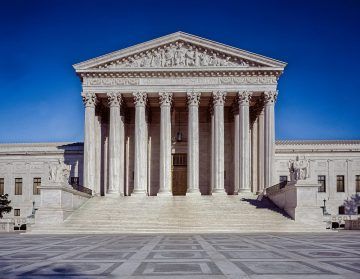
Ryan Doerfler and Samuel Moyn make the case:
Progressives are taking Supreme Court reform seriously for the first time in almost a century. Owing to the rise of the political and academic left following the 2008 financial crisis and the hotly contested appointments of Neil Gorsuch and Brett Kavanaugh, progressives increasingly view the Supreme Court as posing a serious challenge to the successful implementation of ambitious legislation like the “Green New Deal.”
Despite this once-in-a-generation energy around the idea of court reform, the popular and academic discussion of how to reform the Supreme Court has been unduly constrained and is now at risk of closing prematurely. This is the case with regard to its mechanism and its purpose alike. On the left, historical memory has limited debate almost entirely to “court packing.” Meanwhile the center has occupied itself with how to restore the Supreme Court’s legitimacy, rescuing the institution from its regrettable slide into partisanship. And now with the Court appearing to moderate to preempt legislative reform of the institution, the concern is that progressives will drop their demands for change, satisfied with a few modest judicial concessions.
This Article aims to keep the discussion of court reform alive and, just as importantly, to significantly expand its bounds. It does so, first, by urging progressives to reject the legitimacy frame of the issue, which treats the problem with the Supreme Court as one of politicization, in favor of an openly progressive frame in which the question is how to enable democracy within our constitutional scheme.
More here.
